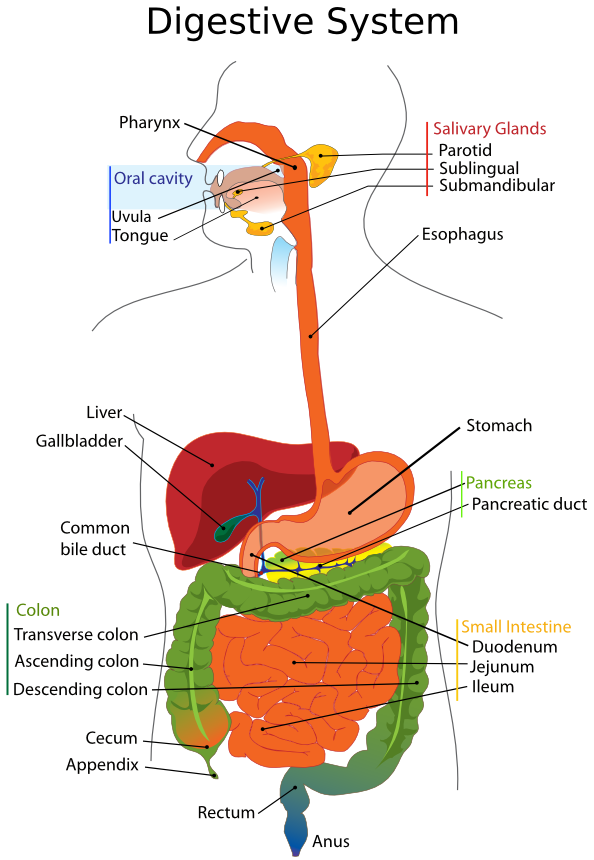***Just an FYI in class today Jeremy said I had the scribe post tonight and not Alexis which is why I am being scribe today, in case you were confused***
TODAY IN CLASS WE.....
- Had a demo
- Took notes
- Had two more demos to go with the notes
We took a lot of notes on enzymes today so if you weren't there it was the wrong day to miss ;) Luckily I am posting this to help you out :)
THE FIRST DEMO
We put unsalted Saltines in our mouths (without chewing) until they dissolved. Then we compared the before taste (right when we put them in our mouths) to the after taste (when they were mushy).
What SHOULD have happened: The after taste should have been sweeter than the before taste.
WHY this should have happened: The enzymes in the saliva in your mouth have begun to break down the cracker into simple sugars (ie: glucose) hence the sweeter taste.
HOW this relates to the unit: The break down of food in your mouth after ingestion (not to be confused with inDIgestion *coughjeremycough*) into simple sugars is the beginning of the digestive process.
THE NOTES
- First we finished the filling in the diagram on page 15 (shown below)

- Then we filled out the chart on page 16. The organs and enzymes listed below are things that we took notes on either on the diagram or the chart.
MOUTH : chews, lubricates and uses tongue to swallow food
- SECRETES- about 1 liter of saliva per day
- ENZYMES- salivary amylase (ACTIVITY OF DIGESTION) which breaks down starch into simple sugars (like in the cracker demo)
ESOPHAGUS :
- SECRETES- nothing
- ENZYMES- none
- ACTIVITY OF DIGESTION- Moves food from mouth to stomach with peristalsis (constriction and relaxation of the muscles to move the food downward). Connects pharynx to stomach.
STOMACH : Food is in the stomach for 2-6 hours. It can hold about 2 liters of food and/or liquid. It churns the food and the lining of the stomach is coated with mucus to prevent it from eating itself.
- SECRETES + ACTION OF SECRETION-
-Gastric juice: Has a pH of 8-2
-HCl: activates pepsin and kills bacteria
-Pepsin
-Rennin
- ENZYMES + ACTIONS OF ENZYMES-
-Pepsin: breaks proteins down into amino acids
-Rennin: works with milk proteins (curdles milk by separating solids from the water)
SMALL INTESTINE : 2 1/2 cm wide and 6m long. Completes digestion and absorption. Covered in villi and microvilli to increase its surface area which in turn increases its ability to absorb things.
- SECRETES- Injestinal juice
- ENZYMES + ACTIONS OF ENZYMES-
-
Peptidase: breaks
proteins down into amino acids
-Maltase: breaks maltose into two glucose molecules
-Sucrase: breaks sucrose down into glucose and fructose
-Lactase: breaks lactose down into glucose and galactose
APPENDIX : Found near the start of the large intestine. Food is not supposed to pass through it (accessory organ) and if food does enter it, it may need to be surgically removed.
LARGE INTESTINE (COLON) : 5cm wide and 1.5m long. Begins by ascending (going up), then transversing (going horizontally) then descending (going down) then finishes by being sigmoid (going in a squiggly line).
- SECRETES- nothing
- ENZYMES- none
- ACTIVITY OF DIGESTION- Absorbs H2O and uses peristalsis to compress feces which are made up of things like cellulose and e. coli
PANCREAS : Accessory organ
- SECRETES- Pancreatic juice
- ENZYMES + ACTIONS OF ENZYMES-
-Trypsin: breaks down protein into amino acids
-Lipase: breaks down fats(lipids) into glycerol and fatty acids
-Pancreatic amylase: breaks down starch into simple sugars
LIVER : Accessory organ
- SECRETES + ACTION OF SECRETION-
- Bile juice: bile salts
emulsify*** fats
***Emulsify is when you take a big glob of something and break it up into a bunch of little globs. This increases the surface area making the fats more accessible to lipase.
THE OTHER DEMOS
RENNIN AND MILK DEMO:
Mrs. Andrews demonstrated how rennin works by putting some store bought rennin into a glass of milk and mixing it around. The milk curdles and solid chunks appeared in a clearish liquid.
JELLO DEMO:
We were given an observations sheet to record what happened during the demo. In the first column we recorded the characteristics of Jello (ie: solid but squishy). Then Mrs. A told us to hypothesize as to what would happen if you made Jello with fresh pineapple in it and what would happen if you made it with canned pineapple in it. She then showed us examples of what would happen. The Jello with fresh pineapple in it stayed a liquid but the Jello with canned pineapple in it solidified. This is because when the pineapple is canned it is heated up which gets rid of the enzymes that reacted with the Jello in the fresh pineapple example. Then Mrs. A told us to hypothesize about what would happen if Jello were made with Adolph's Meat Tenderizer and McCormick's Meat Tenderizer. Then she showed us two examples of what would happen in both cases. The one with Adolph's Meat Tenderizer was fairly solid but still a little liquidy and the cup with McCormick's Meat Tenderizer was mostly liquid and just a little solidified. This happened because the different enzymes in the tenderizers reacted with the Jello and did not allow it to solidify properly.
HOMEWORK
- Lab #55 - UP p. 41-46 due Monday (we should have some time in class to work on this)
- Digestion handouts due Friday
- Design a quiz due 5/8
NEXT SCRIBE****SIDD****









